Gardening doesn’t have to be a battle of wills against nature; sometimes, it can be as simple as letting the right plants take the spotlight. Whether you’re a seasoned gardener looking to add some effortless beauty to your landscape or a newcomer eager to dip your toes into horticulture, low maintenance flowering plants offer a perfect blend of color and ease. These resilient beauties not only brighten up your garden with minimal fuss but also provide a rewarding gardening experience that fits seamlessly into your busy lifestyle.
Understanding which flowering plants require minimal attention can transform your garden from a chore into a sanctuary. In this article, we will explore a selection of flowering plants that thrive with little intervention, ensuring that your garden remains vibrant and lively throughout the seasons. You’ll discover plants that flourish in various conditions, offering you the flexibility to create a stunning garden without the constant need for upkeep. By the end of this exploration, you’ll feel empowered to cultivate a garden that practically takes care of itself, leaving you with more time to enjoy its blooming beauty.
Choosing Easy-Care Flower Varieties
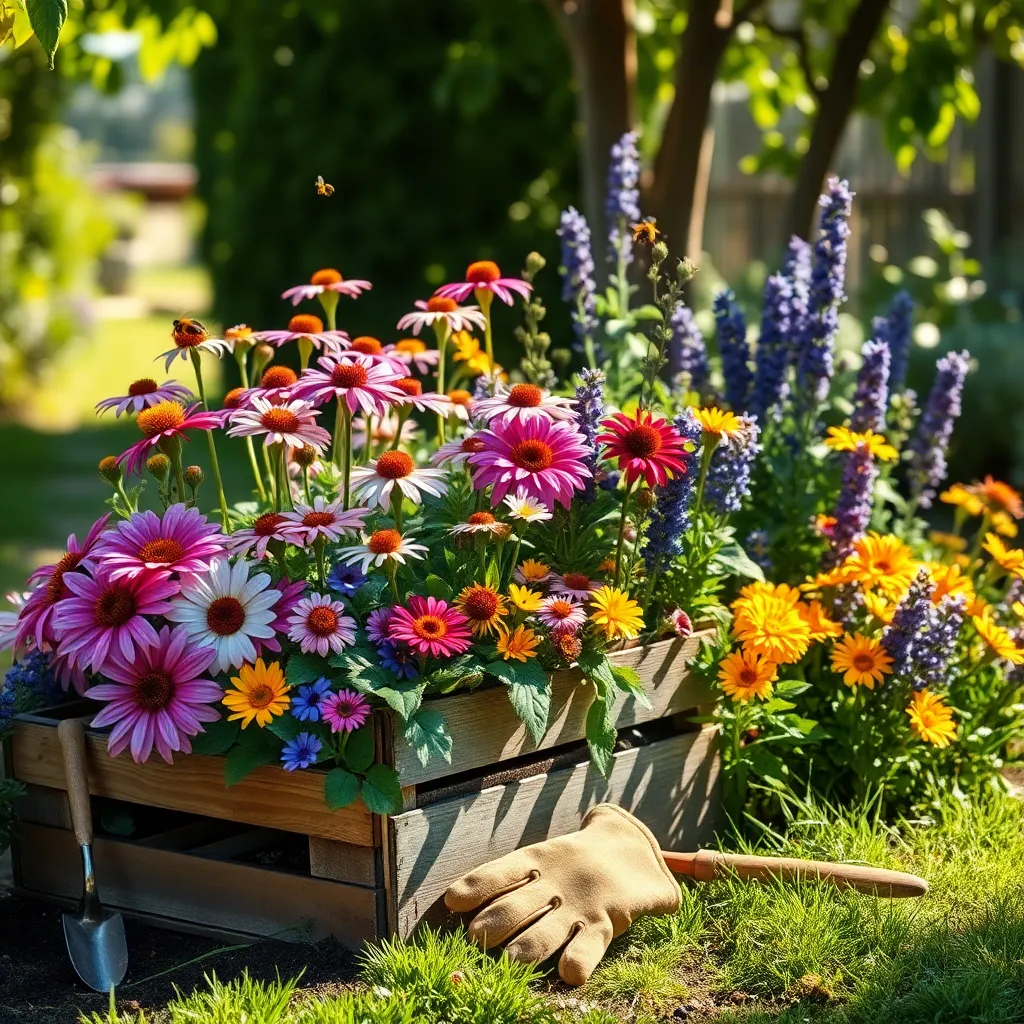
When selecting easy-care flower varieties, consider plants that thrive in a variety of conditions. Perennials like Black-eyed Susans and daylilies are excellent choices because they require minimal attention and return each year with vibrant blooms.
These plants flourish best in well-drained soil and can tolerate both full sun and partial shade, making them versatile additions to your garden. Ensure the soil is enriched with compost to provide essential nutrients, which will help these flowers thrive with little intervention.
For gardeners seeking a pop of color, zinnias and marigolds are ideal as they bloom profusely with little care. Water them once or twice a week, depending on rainfall, to keep the soil consistently moist but not waterlogged.
Incorporating these easy-care varieties means less time spent on maintenance and more time enjoying your garden’s beauty. To further simplify your gardening efforts, apply a layer of mulch around the base of these plants, which helps retain moisture and suppress weeds.
Optimal Planting Conditions Explained
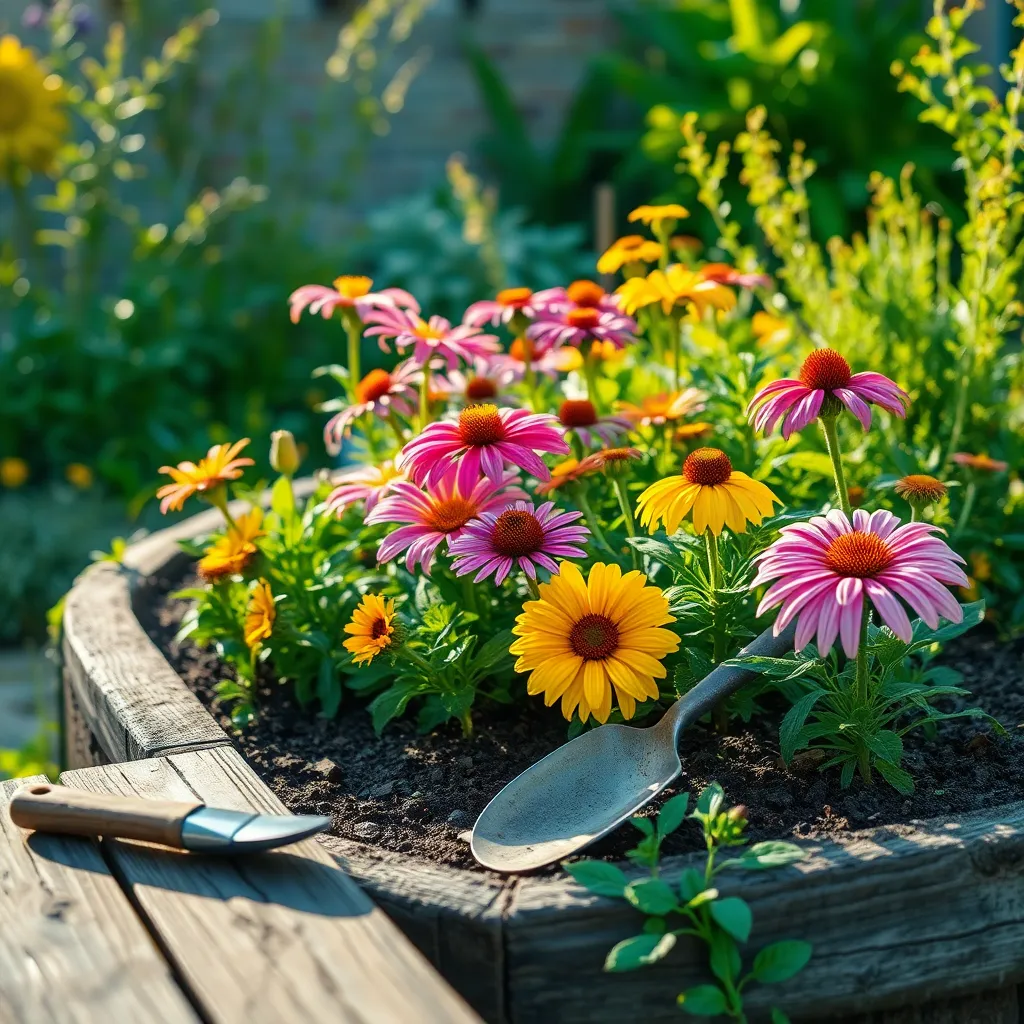
Understanding the optimal planting conditions is essential for cultivating a vibrant and low-maintenance flower garden. Begin by assessing the sunlight requirements of your chosen plants, as different species thrive under varying levels of light.
Most easy-care flowering plants, such as marigolds and coneflowers, prefer full sun, requiring six to eight hours of direct sunlight daily. However, if your garden is shaded, consider planting shade-tolerant varieties like impatiens or hostas, which flourish in low-light conditions.
Soil quality is another crucial factor in ensuring your plants thrive with minimal intervention. For most flowering plants, a well-draining soil that retains some moisture is ideal, so consider adding organic matter like compost to improve soil structure.
Watering practices also play a significant role in plant health and maintenance. Generally, flowering plants need about one inch of water per week, either from rainfall or supplemental irrigation, but always adjust according to specific plant needs and weather conditions.
Simplified Watering Tips for Beginners
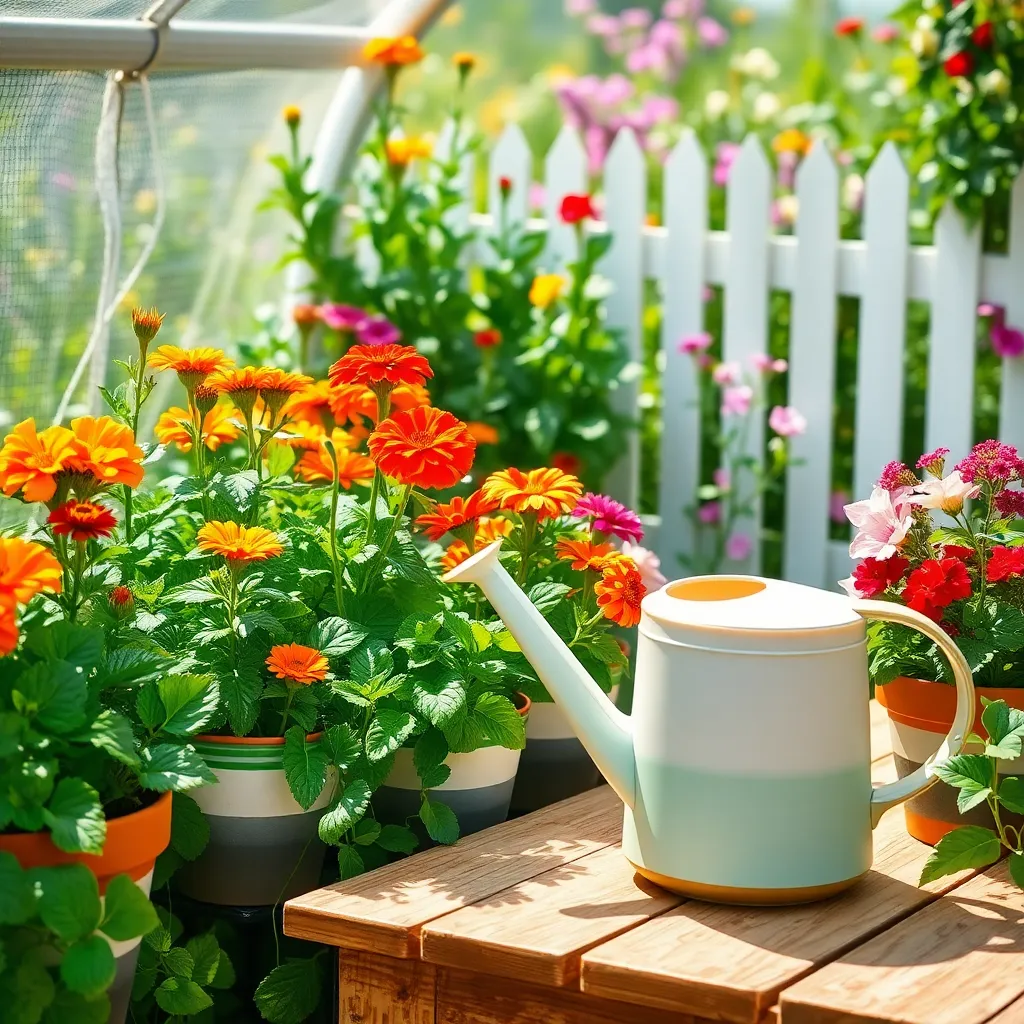
Watering consistently is crucial to maintaining low maintenance flowering plants, yet it doesn’t have to be complicated. The key is to water deeply but less frequently, which encourages roots to grow deeper and makes the plants more drought-resistant.
Understanding your plant’s specific needs can simplify your watering routine significantly. Some plants, like succulents, prefer their soil to dry out completely between waterings, while others, like ferns, thrive in consistently moist soil.
Using the right soil can also make a big difference in how often you need to water. For most flowering plants, a well-draining soil mix, such as one with a blend of peat moss, perlite, and compost, is ideal because it retains moisture without becoming waterlogged.
To determine when to water, simply stick your finger into the soil about an inch deep. If the soil feels dry at that depth, it’s time to water; if it’s still moist, you can wait a few more days.
- Tip: Mulching around your plants can help retain moisture and reduce the frequency of watering.
- Advanced Tip: Consider installing a drip irrigation system for a more efficient and hands-free watering solution.
Minimal Pruning Techniques for Blooms
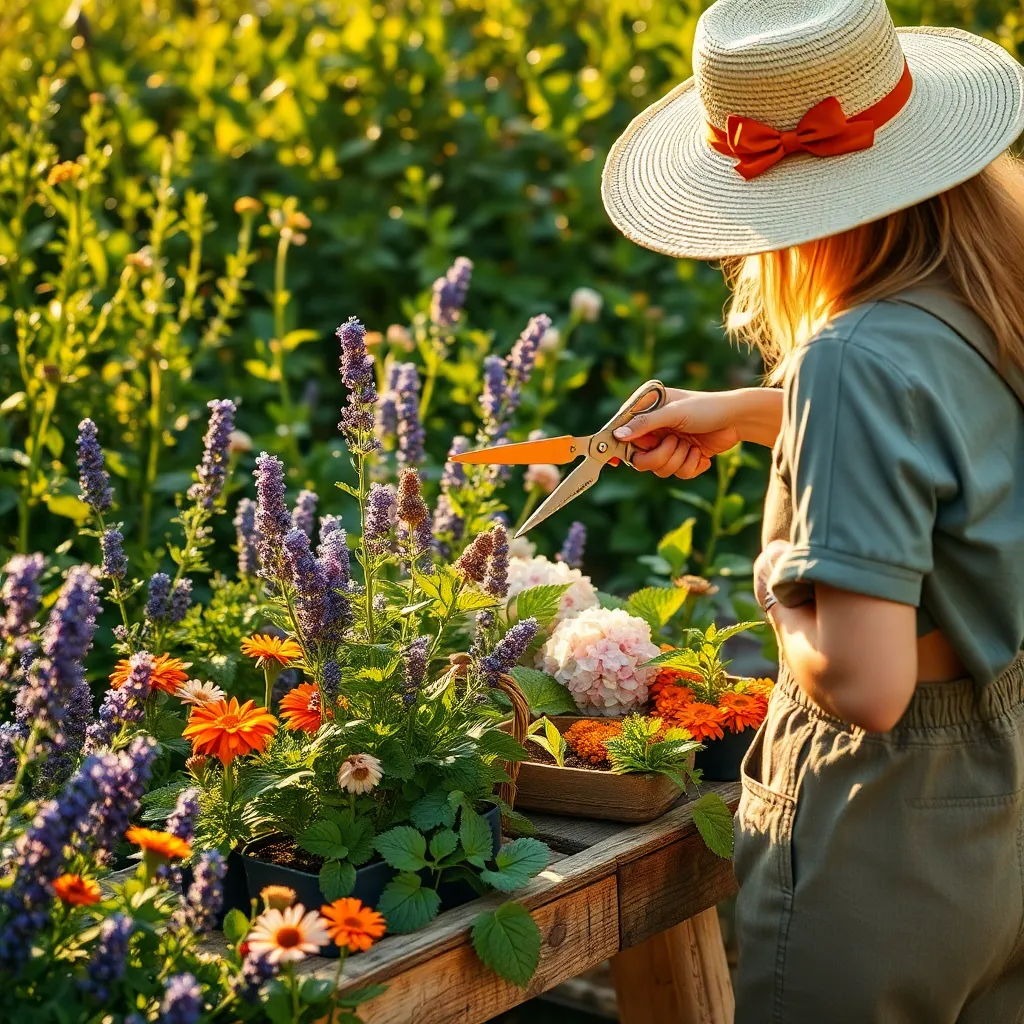
Pruning is essential for maintaining healthy flowering plants, but it doesn’t have to be complicated. Minimal pruning techniques focus on removing only what is necessary to encourage optimal blooms and plant health.
Begin by identifying dead or damaged branches, as these can hinder new growth. Using clean, sharp pruning shears, cut back to the nearest healthy growth to stimulate new shoots.
For flowering shrubs like hydrangeas or roses, timing is crucial. Prune immediately after blooming to ensure you don’t remove buds that will flower in the next season.
When dealing with perennials, such as coneflowers or daylilies, deadheading is a simple technique to prolong bloom time. Remove spent flowers by cutting the stem just above the first set of leaves, which encourages more blooms.
Consider the natural shape of your plant when pruning, as excessive cutting can stress the plant. Focus on maintaining the plant’s natural form while removing crossing branches that can cause damage.
For advanced gardeners, thinning is an effective pruning method to improve air circulation and light penetration. Remove select inner branches without altering the plant’s overall shape, which helps prevent disease and encourages lush growth.
Pest Control with Little Effort
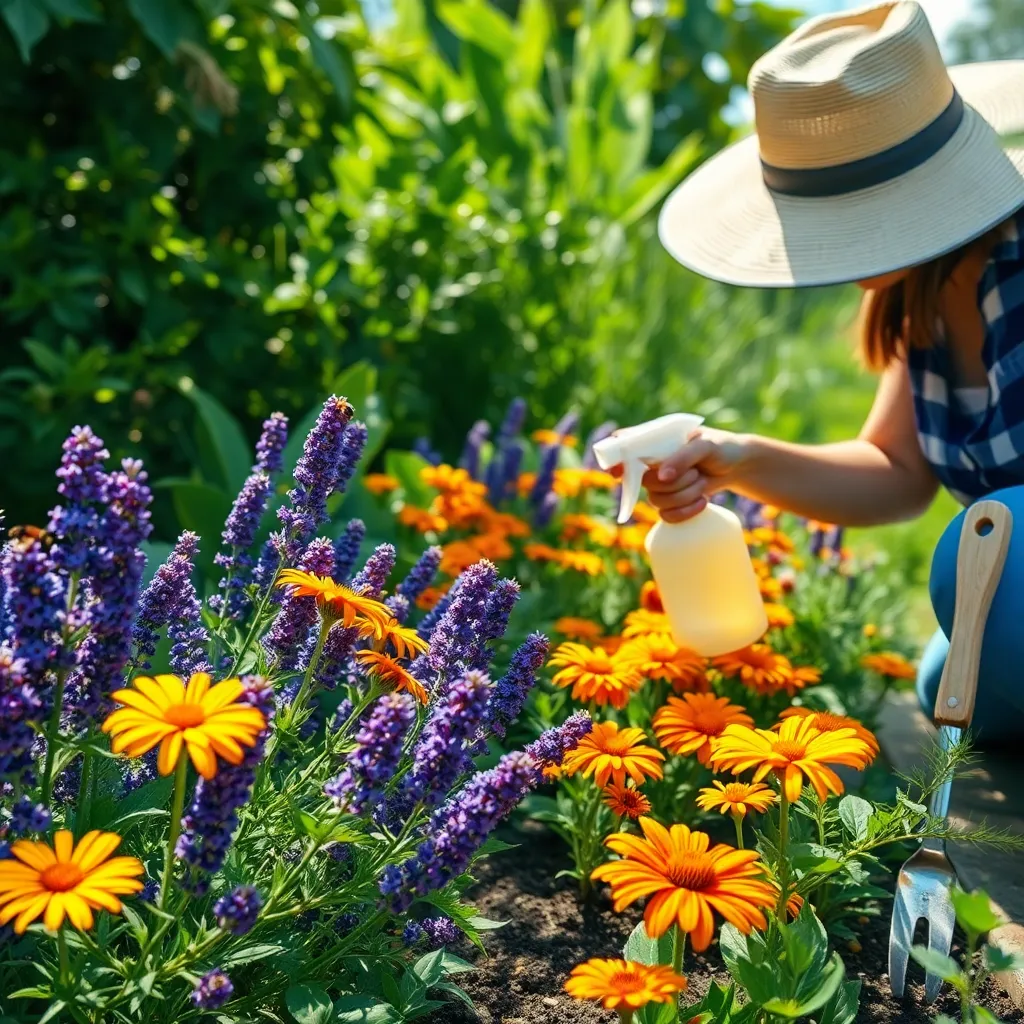
To manage pests with minimal effort, start by choosing flowering plants known for their natural pest resistance, such as marigolds and lavender. These plants not only add vibrant color to your garden but also deter common pests like aphids and mosquitoes through their scent and natural oils.
Another simple strategy is to make use of companion planting, which involves growing pest-repellent plants next to those that are more susceptible to insect attacks. For instance, planting basil alongside tomatoes can help keep hornworms at bay, while nasturtiums can protect beans from aphids.
Integrating organic mulch into your garden beds can also reduce pest problems significantly. Mulch not only retains moisture and suppresses weeds but also provides a barrier that prevents pests from reaching the plants’ roots, which is crucial for healthy growth.
As a more advanced tip, consider setting up physical barriers like row covers or netting over your flowering plants. These barriers can protect your plants from larger pests such as birds and rabbits, ensuring your blooms thrive without frequent intervention.
Conclusion: Growing Success with These Plants
In exploring ‘Low Maintenance Flowering Plants,’ we’ve uncovered five key relationship concepts: fostering mutual growth with minimal demands, understanding the beauty of consistency, embracing resilience in challenging times, celebrating small, everyday joys, and cultivating an environment where love can effortlessly flourish. These principles remind us that nurturing a relationship doesn’t have to be complicated; it can be as simple and rewarding as tending to a garden.
As your actionable next step, identify one area in your relationship that could benefit from more nurturing and apply these principles to foster growth and harmony. Whether it’s adding regular date nights or simply practicing gratitude, small, consistent efforts can yield beautiful results.
Remember to bookmark this article as your go-to guide for cultivating a low-maintenance yet deeply fulfilling relationship. Each revisit can offer fresh insights and renewed motivation.
Looking ahead, by consistently applying these principles, you can create a relationship that not only withstands the tests of time but also blossoms with each passing season. Empower yourself to take these steps today, and watch as your love story unfolds more beautifully than you ever imagined.

